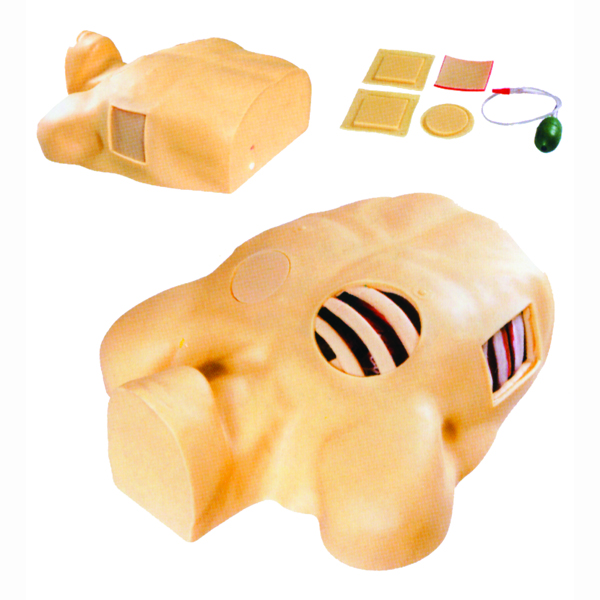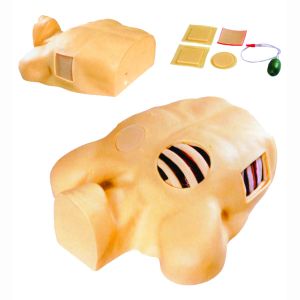Thoracic puncture and drainage model plays a vital role in medical education and clinical skills training. It accurately simulates the real operation scenario and provides a safe and effective practice platform for students. The following is a detailed explanation of how the thoracic puncture drainage model simulates the real operation scenario:

1. Highly simulated anatomical structure
Thoracic puncture drainage models are usually made of high-quality materials, such as PVC, to ensure that they have good durability and imitation. The design of the model strictly follows the principles of human anatomy and accurately reproduces the anatomical structure of the chest cavity, including the sternum, ribs, pleural cavity, lung tissue and other key parts. This highly simulated anatomy allows students to experience tactile and visual feedback similar to that of a real human body during manipulation, thereby deepening their understanding and memory of the anatomy of the chest cavity.
Second, real operating experience
Thoracic puncture drainage model not only has a realistic appearance, but more importantly, it can provide real operating experience. The model is provided with clear puncture points and drainage openings, and students can perform operation training such as pneumothorax puncture decompression and liquid pneumothorax closed drainage on the model. During the operation, students need to follow the actual surgical steps and procedures, such as disinfection, towel laying, local anesthesia, puncture, drainage, etc., to ensure the accuracy and safety of the operation. Through repeated practice, students can gradually master the correct puncture techniques and drainage methods, and improve the success rate and safety in actual operation.
3. Simulated complication management
Thoracic puncture drainage model also has the function of simulating the management of complications. In practice, due to individual differences in patients and complexity of the disease, there may be various complications, such as poor drainage, infection, bleeding, etc. Thoracic puncture and drainage model can simulate the occurrence of these complications, so that students can learn and master the corresponding treatment methods and skills in a simulated environment. Through simulation training, students can have a more comprehensive understanding of the risks and challenges of thoracic puncture drainage, and improve the ability and level of coping with emergencies.
Fourth, teaching auxiliary function
Thoracic puncture drainage model also has a variety of teaching auxiliary functions, such as voice prompt, indicator light display and so on. These functions can help students better understand and master the operation skills and processes, improve the teaching effect and learning efficiency. At the same time, the model can also be customized and reformed according to the teaching needs to meet the teaching requirements of different levels and directions
In summary, the thoracic puncture and drainage model successfully simulated the real operation scenario through the design of highly simulated anatomical structure, real operating experience, simulated complication management and teaching auxiliary functions, which provided strong support for medical education and clinical skill training.

